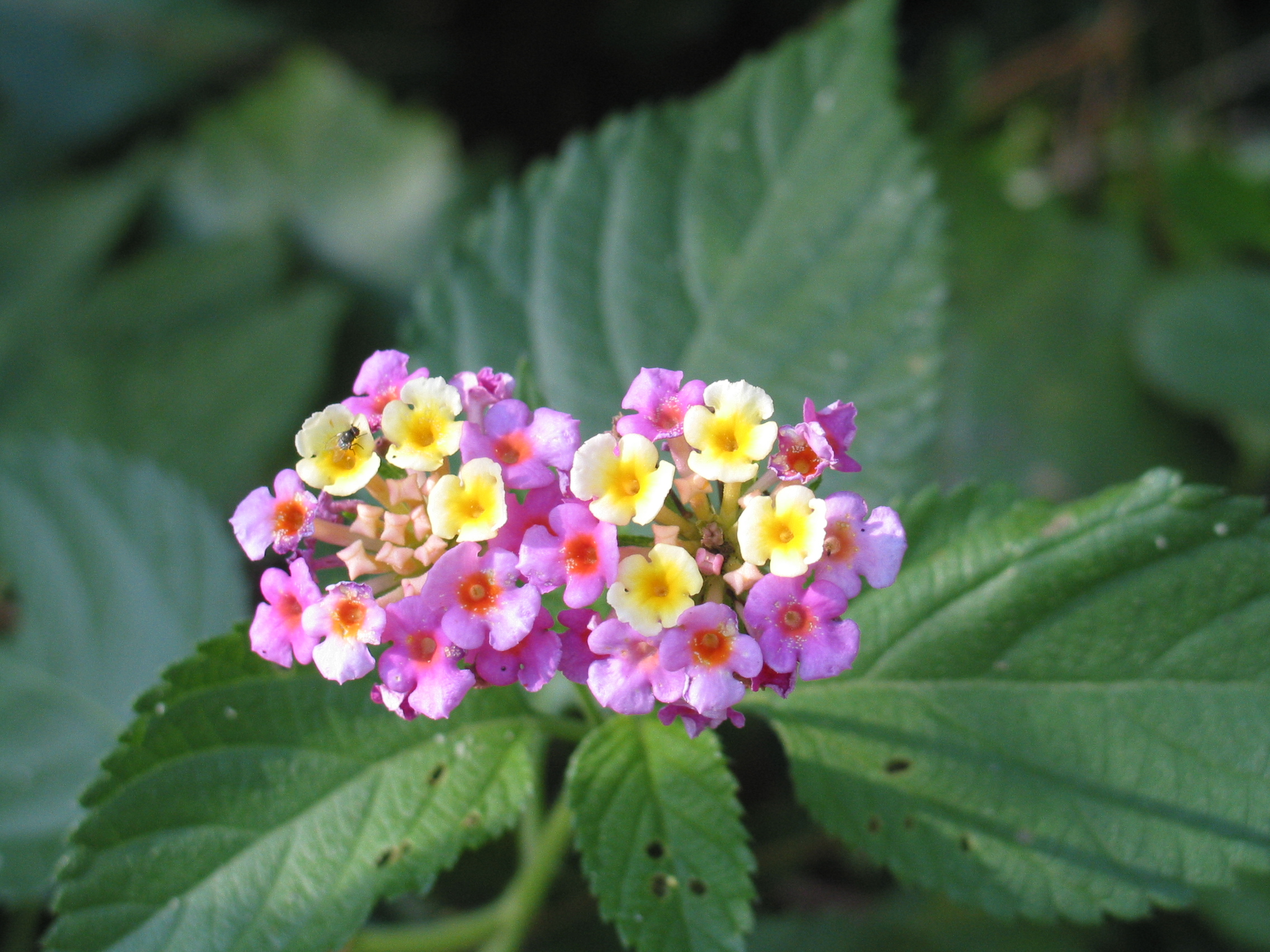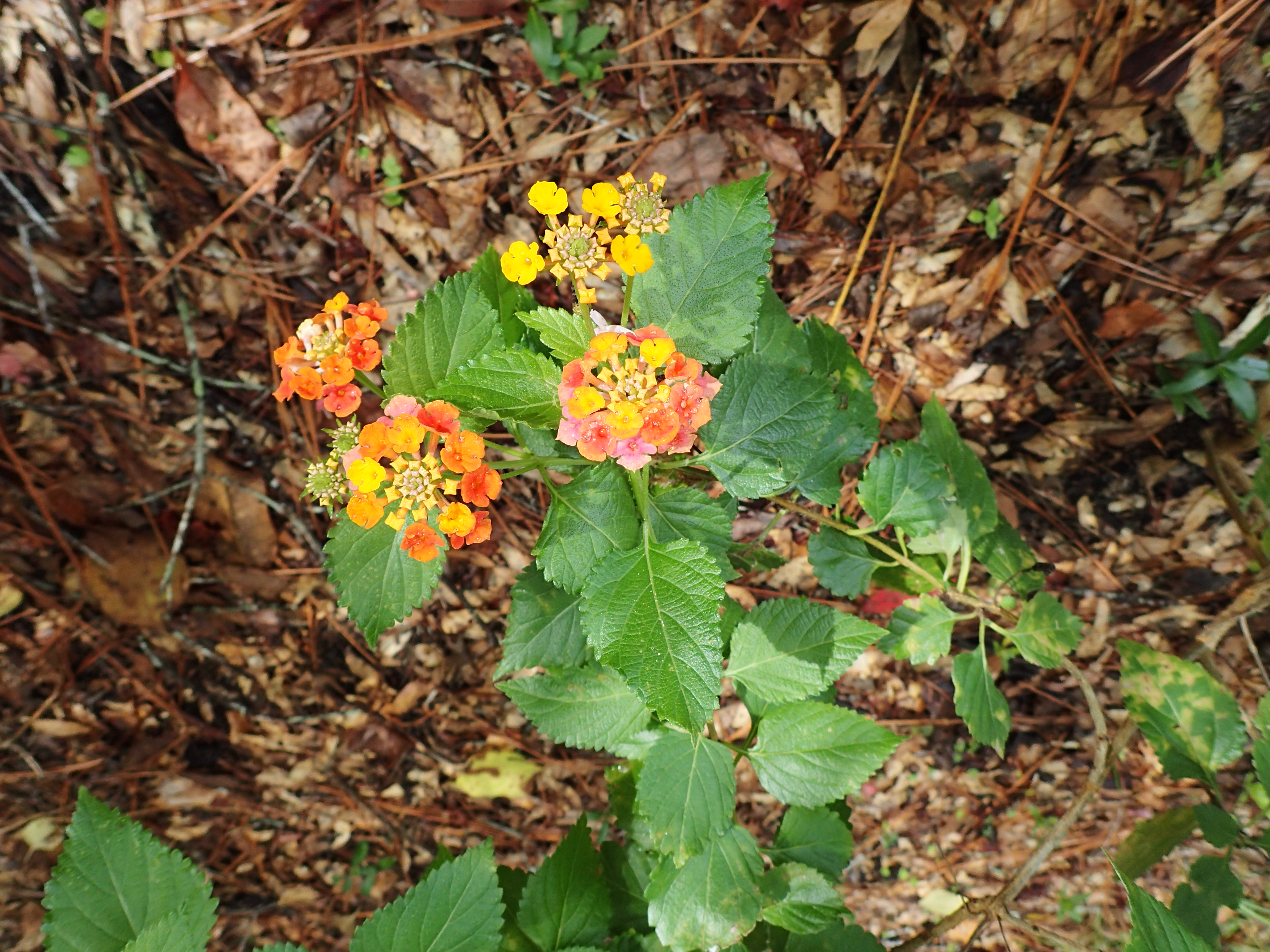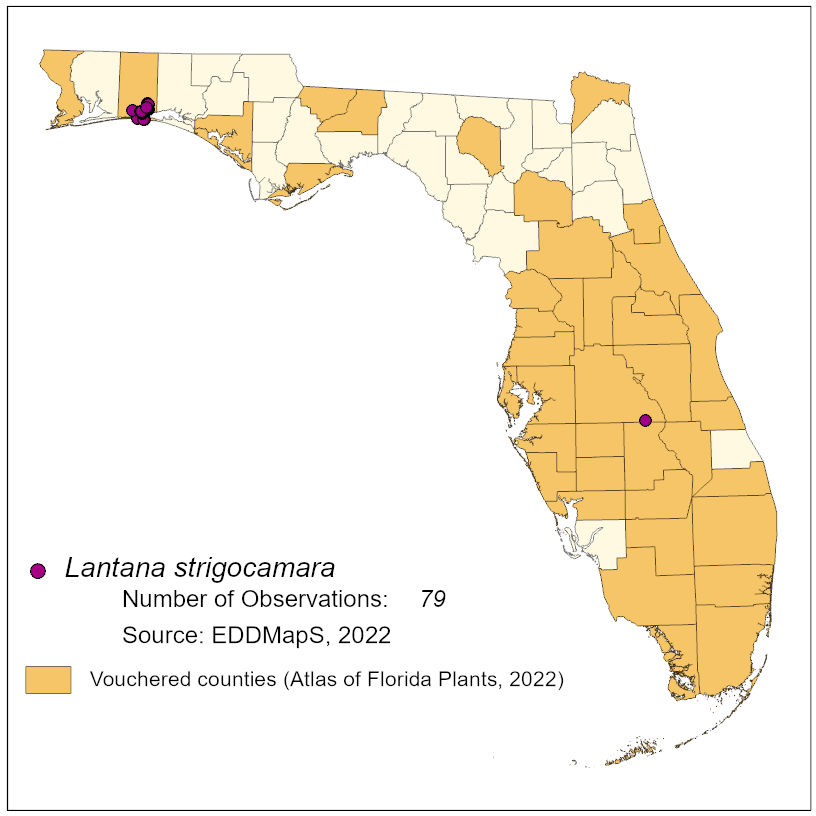Common Name: lantana
Family: Verbenaceae
Common Synonyms: Lantana camara
USDA Hardiness Zone: 9b-11
Growth Habit: Shrub
Origin: Caribbean
FISC Category: 1
FDACS Listed Noxious Weed: No
Introduction Date: 1804
IFAS Assessment:


Multistemmed, deciduous shrub to 2 m with square stems, covered with bristly hairs and small prickles. Stalked leaves opposite, simple, rough hairy, to 15 cm, with blunt-toothed margins. Leaves bearing strong odor. Showy flowers small, multicolored in dense clusters to 4 cm across. Corolla a narrow tube with four spreading lobes and variable in color (orange, pink, yellow, red). Fruit a fleshy, round, 2-seeded drupe, black.
Pinelands, hammocks, disturbed areas
A serious worldwide invader, a serious to common weed in 25 countries. Hybridizes with the native Lantana depressa, contaminating the gene pool.

NA
Dave's Garden. 2014. PlantFiles: Lantana, Lantana camara. http://davesgarden.com/guides/pf/go/578/. Accessed on June 20, 2014.
Langeland, K.A., H.M. Cherry, C.M. McCormick, K.C. Burks. 2008. Identification and Biology of Non-Native Plants in Florida's Natural Areas-Second Edition. IFAS Publication SP 257. University of Florida, Gainesville, Florida.
Langeland, K.A., J.A. Ferrell, B. Sellers, G.E. MacDonald, and R.K. Stocker. 2011. Integrated management of non-native plants in natural areas of Florida. EDIS publication SP 242. University of Florida, Gainesville, Florida.
Wunderlin, R. P., and B. F. Hansen. 2008. Atlas of Florida Vascular Plants (http://florida.plantatlas.usf.edu/).[S. M. Landry and K. N. Campbell (application development), Florida Center for Community Design and Research.] Institute for Systematic Botany, University of South Florida, Tampa.